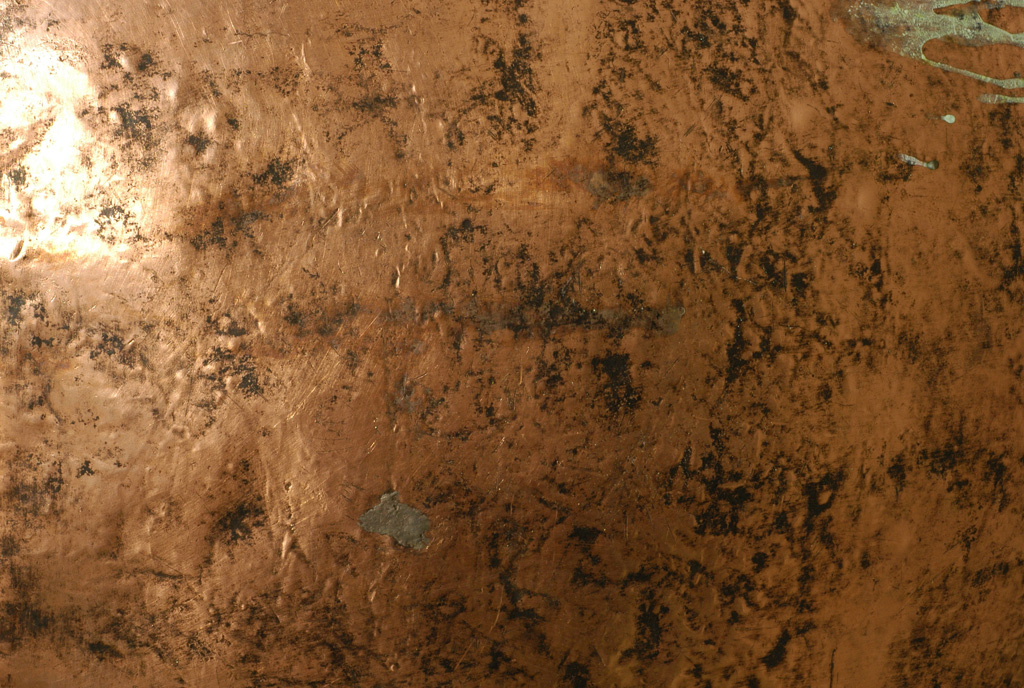Click on a topic below to expand the content for that topic.
Gold
Given its expense in recent times, I do not routinely use gold in my preparations.
If this is a preference of yours, I will be happy to estimate the cost of the piece and begin its fabrication upon receipt of a down payment to use in acquiring the materials.
If this is a preference of yours, I will be happy to estimate the cost of the piece and begin its fabrication upon receipt of a down payment to use in acquiring the materials.
Other Gold Colors
Pure gold (24K) has its characteristic color, as well as many of its alloys such as 22K, 18K, and 14K. Silver and copper are used as the other materials in the alloy, and the overall color is what is seen in the marketplace as "gold".
When a metal such as nickel is used in the alloy, the color is altered to the relatively well known white gold. Some people are unfortunately sensitive to nickel and would need to find a formulation of white gold that uses more hypo-allergenic ingredients
Rose gold is often an alloy of gold and copper. The degree of redness can vary from pink to rose to red depending on the ratio of gold to copper. One formulation of rose gold is 75% gold to 25% copper, giving an alloy of 18K rose gold.
I have some pieces prepared using rose gold-filled wire that allow for this very attractive color to be used to good advantage in an economically prudent fashion. If you are interested in a piece using this as the substrate, please inquire.
Many other alloys are possible and additional colors result. For example, gold plus silver (without the usual copper) can give rise to a greenish-yellow color known as "green-gold". Metallurgists have many formulations that produce exotic colors, but most are unsuitable for jewelry purposes.
When a metal such as nickel is used in the alloy, the color is altered to the relatively well known white gold. Some people are unfortunately sensitive to nickel and would need to find a formulation of white gold that uses more hypo-allergenic ingredients
Rose gold is often an alloy of gold and copper. The degree of redness can vary from pink to rose to red depending on the ratio of gold to copper. One formulation of rose gold is 75% gold to 25% copper, giving an alloy of 18K rose gold.
I have some pieces prepared using rose gold-filled wire that allow for this very attractive color to be used to good advantage in an economically prudent fashion. If you are interested in a piece using this as the substrate, please inquire.
Many other alloys are possible and additional colors result. For example, gold plus silver (without the usual copper) can give rise to a greenish-yellow color known as "green-gold". Metallurgists have many formulations that produce exotic colors, but most are unsuitable for jewelry purposes.
Gold-filled Wire
A compromise between the beauty of gold and economic reality, it is a layer of gold upon a less costly metal core.
I likewise do not stock items made with it, but can prepare you a custom piece if you would like to commission one. It is similar in its composition to silver-filled materials (see below) and likewise not as subject to wear as something gold-plated might be.
I likewise do not stock items made with it, but can prepare you a custom piece if you would like to commission one. It is similar in its composition to silver-filled materials (see below) and likewise not as subject to wear as something gold-plated might be.
Fine Silver Wire
This refers to pure silver, that is, silver with no other metals added to make an alloy.
It is also sometimes described as ".999 silver." It is too soft to be used for jewelry pieces, but I do use it to make findings such as headpins and fused links.
These are then "work-hardened" or otherwise treated to enable them to be worn and enjoyed in safety.
It is also sometimes described as ".999 silver." It is too soft to be used for jewelry pieces, but I do use it to make findings such as headpins and fused links.
These are then "work-hardened" or otherwise treated to enable them to be worn and enjoyed in safety.
Sterling Silver Wire & Sheet
My most commonly used and favorite material, sterling silver, sometimes called ".925 silver" for the percentage of silver in the overall alloy.
Other metals such as copper, zinc and platinum are added for strength and to improve other properties. These materials may be a contributor to problems some people have wearing sterling silver.
Other metals such as copper, zinc and platinum are added for strength and to improve other properties. These materials may be a contributor to problems some people have wearing sterling silver.
Argentium™ Silver Wire & Sheet
This is a modern silver alloy which modifies the better-known traditional sterling alloy (92.5% silver + 7.5% copper) by replacing some of the copper with the elemental metal germanium.
As it retains the 92.5% silver content of the traditional alloy, it is still referred to as sterling silver.
Argentium™ silver is non-tarnishing and is often used in pieces where the artist wants the piece to remain bright.
As it retains the 92.5% silver content of the traditional alloy, it is still referred to as sterling silver.
Argentium™ silver is non-tarnishing and is often used in pieces where the artist wants the piece to remain bright.
Silver-filled Wire & Sheet
This material has a layer of .925 (or better) Sterling Silver that has been mechanically bonded with heat and tremendous pressure to a brass core.
Silver-filled wire is usually around 10% (1/10) .925 Sterling Silver by weight.
The layer of Sterling Silver is hundreds of times thicker than silver plating.
It is lower-cost than sterling and I do use it at times, particularly in the larger gauges. Please note that I do not typically stock pieces made in silver-filled materials, but you are welcome to request it if it makes an acquisition more feasible for you.
The price of items made from silver-filled wire will be lower than those made of sterling, and the layer of silver will be much less subject to wear than something silver-plated.
Silver-filled wire is usually around 10% (1/10) .925 Sterling Silver by weight.
The layer of Sterling Silver is hundreds of times thicker than silver plating.
It is lower-cost than sterling and I do use it at times, particularly in the larger gauges. Please note that I do not typically stock pieces made in silver-filled materials, but you are welcome to request it if it makes an acquisition more feasible for you.
The price of items made from silver-filled wire will be lower than those made of sterling, and the layer of silver will be much less subject to wear than something silver-plated.
Platinum
Platinum is too expensive to even write about!

